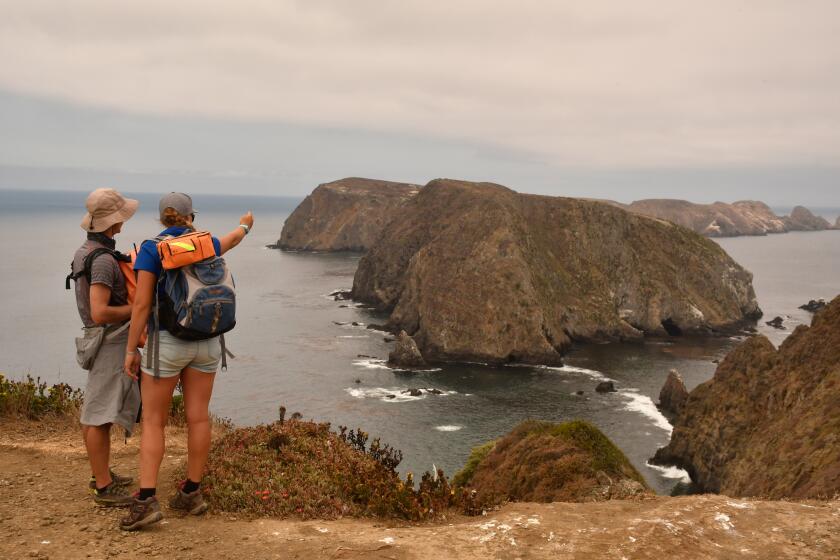L.A. County will experience triple the number of hot days by 2053, study says

- Share via
Los Angeles County will experience triple the number of hot days per year by 2053, according to a new study.
The county, where a typical hot day is just under 94 degrees, gets about seven days that exceed that per year, according to the report released this week by the First Street Foundation, a nonprofit, climate-focused research organization based in New York. By 2053, that number will jump to 21, the study found.
Los Angeles County is up there with Del Norte and Orange counties as the areas in California that will see the most severe jump in hot days. The increase will result in freak infrastructure accidents and cost the state more than half a billion dollars in air conditioning consumption.
“The results will be dire,” First Street Chief Executive Matthew Eby said about the rise in severely hot days across the country.
In 2053, California’s Imperial County, is expected to have 116 days in which the temperature exceeds 100 degrees. Riverside County is expected to have 55 days of triple-digit heat — the second highest number for a California county — according to the study.
Read all of our coverage about how California is neglecting the climate threat posed by extreme heat.
All areas of California, as well as the rest of the country, will see increased heat over the next 30 years, according to the report. The state will also see increasing numbers of heat waves — three straight days of the county’s average hot day — which are worse on the West Coast.
“The likelihood of a heat wave in California is much higher than the rest of the country,” Eby said.
The First Street study also suggests a steep increase in the number of Americans who will face days where the temperature goes above 125 degrees, including in places like Chicago.
By 2053, more than 100 million Americans will deal with days that hot, whereas just over 8 million currently do, according to the study.
The report refers to the counties that will experience a day over 125 degrees as the “extreme heat belt.”
Meanwhile, California is already enduring a historic drought amplified by global warming.
Earlier this month, Gov. Gavin Newsom released a new plan to adapt to the state’s hotter, drier future by capturing and storing more water, recycling more wastewater and desalinating seawater and salty groundwater.
The governor’s new water-supply strategy, detailed in a 16-page document, lays out a series of actions aimed at preparing the state for an estimated 10% decrease in California’s water supply by 2040 because of higher temperatures and decreased runoff. The plan focuses on accelerating infrastructure projects, boosting conservation and upgrading the state’s water system to keep up with the increasing pace of climate change.
“The hots are getting a lot hotter. The dries are getting a lot drier,” Newsom said. “We have to adapt to that new reality, and we have to change our approach.”
The state plan calls for expanding water storage capacity above and below ground by 4 million acre-feet; expanding groundwater recharge; accelerating wastewater recycling projects; building projects to capture more runoff during storms, and investing in desalination of ocean water and salty groundwater.
The projected loss of 10% of the state’s water supply within two decades translates to losing 6 million to 9 million acre-feet per year on average — more than the volume of Shasta Lake, the state’s largest reservoir, which holds 4.5 million acre-feet.
“Mother Nature is still bountiful,” Newsom said. “But she’s not operating like she did 50 years ago.”
Times staff writer Ian James contributed to this story.
More to Read
Sign up for Essential California
The most important California stories and recommendations in your inbox every morning.
You may occasionally receive promotional content from the Los Angeles Times.















